
To celebrate the 85th anniversary of the discovery of the Lascaux caves, Scala Archives invites you on an immersive journey to explore the art, enigmas, and mysteries of one of the most significant archaeological discoveries of the twentieth century.
Thanks to the exclusive collaboration with the French Centre des Monuments Nationaux, Scala Archives offers a unique collection of videos, reports, and reconstructions available in our archive, allowing you to delve deep into the captivating world of our prehistory.
On September 12, 1940, the Lascaux caves were discovered thanks to curiosity and chance. Four teenagers—Marcel Ravidat, Jacques Marsal, Georges Agnel, and Simon Coencas—were exploring the countryside of southwestern France searching for their lost dog when they accidentally uncovered the entrance to the cave.
This unexpected discovery revealed one of the most significant archaeological treasures of the twentieth century: approximately 600 prehistoric figures that would revolutionize our understanding of ancient human cultures.
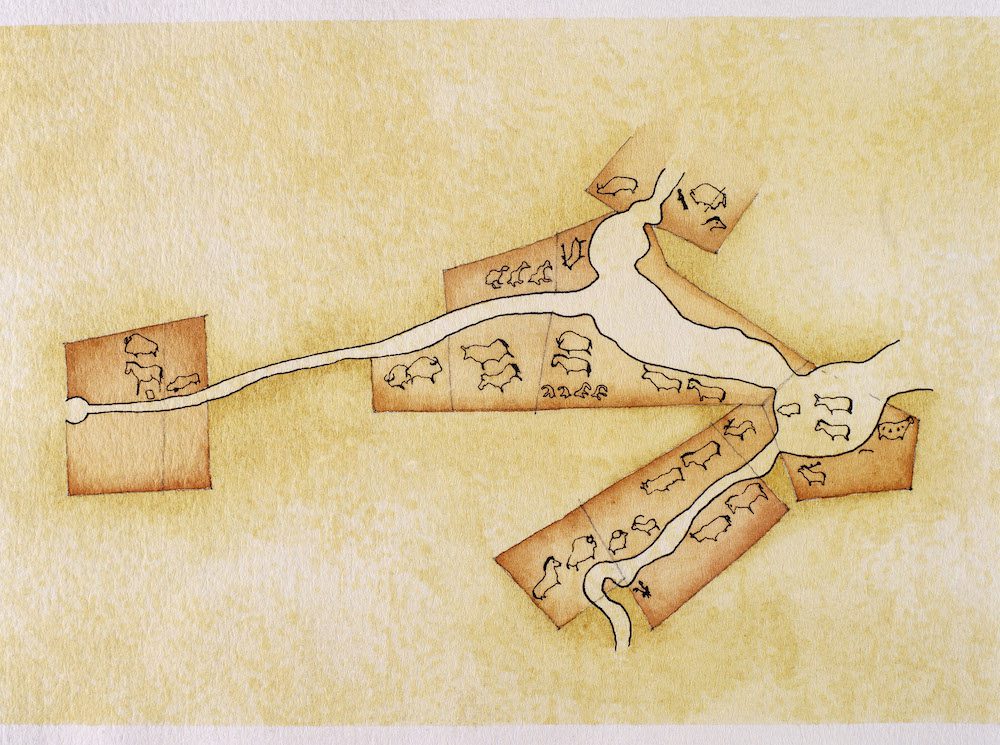
The Lascaux cave is world-renowned for its intricate cave paintings, which date back circa 17,000 years. These remarkable artworks spread out across two extensive galleries, offering a fascinating glimpse into the lifestyle, beliefs, and environment of the prehistoric people who created them.
It is believed that the entrance of the cave, where natural light could arrive, served as a temporary dwelling for those who decorated the walls and ceilings. In the deeper sections of the cave archaeologists have uncovered lamps used to illuminate the walls, although no everyday objects have been found.
The discovery of the Lascaux caves raises fascinating questions: were the paintings purely decorative, or did they have a functional role in rituals or community activities? These unanswered questions only deepen the mystery surrounding the Lascaux caves, adding to their allure as one of the most captivating prehistoric sites in the world.

Images and videos are available through Scala Archives, the official representative of the Réunion des Musées Nationaux.
The Lascaux cave is home to around 600 figures, primarily of animals such as horses, deer, and the aurochs. These cave paintings not only provide invaluable insight into the fauna of the time, but also highlight the profound connection between prehistoric humans and the natural world. One of the most striking features of these paintings is their dynamic portrayal of animals. The artists masterfully used the natural contours of the cave walls to create a sense of movement and depth, often depicting animals in action—running, jumping, and interacting with each other.
The artists of Lascaux employed a range of natural pigments derived from minerals and plants. Reds and yellows were sourced from ochre, blacks from manganese dioxide, and whites from chalk, demonstrating a sophisticated understanding of available materials. These pigments were likely mixed with animal fat or water to create a durable paint. The tools used included brushes made from animal hair and blowing techniques that may have involved hollowed-out bones, akin to an early airbrush method.
In the Great Hall of the Bulls—also known as the Rotunda—visitors are captivated by depictions of wild cattle, including the impressive aurochs, each measuring between 4 and 5 meters in size.
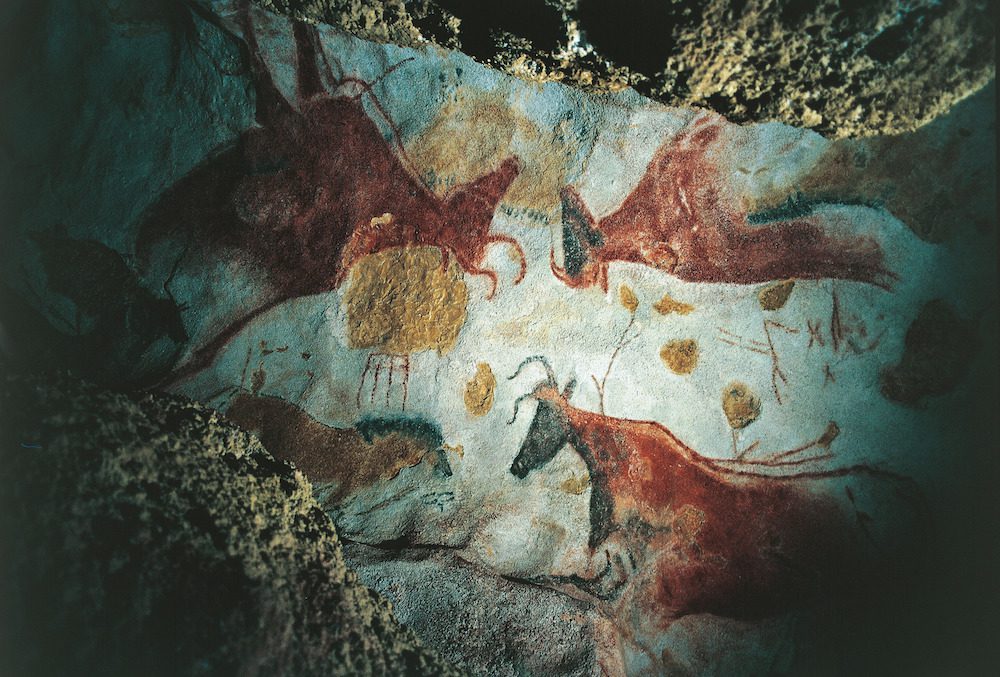
Upon entering the Lascaux cave, the path diverges into two routes. The left leads to the Axial Diverticulum, filled with depictions of various animal species, while the right leads to the Passage, which further divides into two sections.
Immerse yourself in the original cave through our videos!
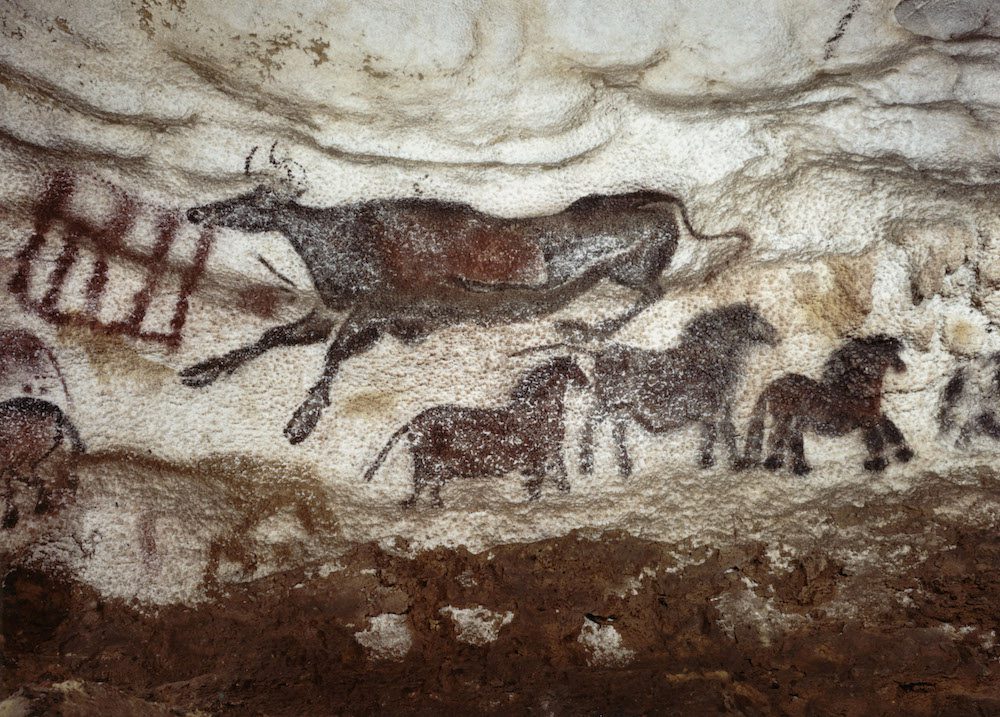
To the right of the Passage is the Apse, a space about 5 meters deep, completely covered with over a thousand representations.
Exiting the Apse, visitors arrive at the Well, separated from the cave by an overhang. It is here that one finds one of the most enigmatic depictions in all of Lascaux: a man with the head of a bird standing before a disembowelled bison. Scholars have yet to understand and agree on a precise meaning of this extraordinary scene. However, one widely accepted theory suggests the man represents a shaman, a spiritual leader capable of communicating with the supernatural. The birdman is often associated with states of ecstasy and transcendence, indicating that he may serve as a mediator between the earthly and celestial realms.
In this interpretation, shamans used symbols like the bird to bridge these worlds, transmitting knowledge and visions through rituals and dances. Therefore, the bird-headed man not only represents a mythological symbol but also underscores an ancient understanding of the natural and celestial realms, shedding light on the spirituality and paleo astronomy of prehistoric cultures.
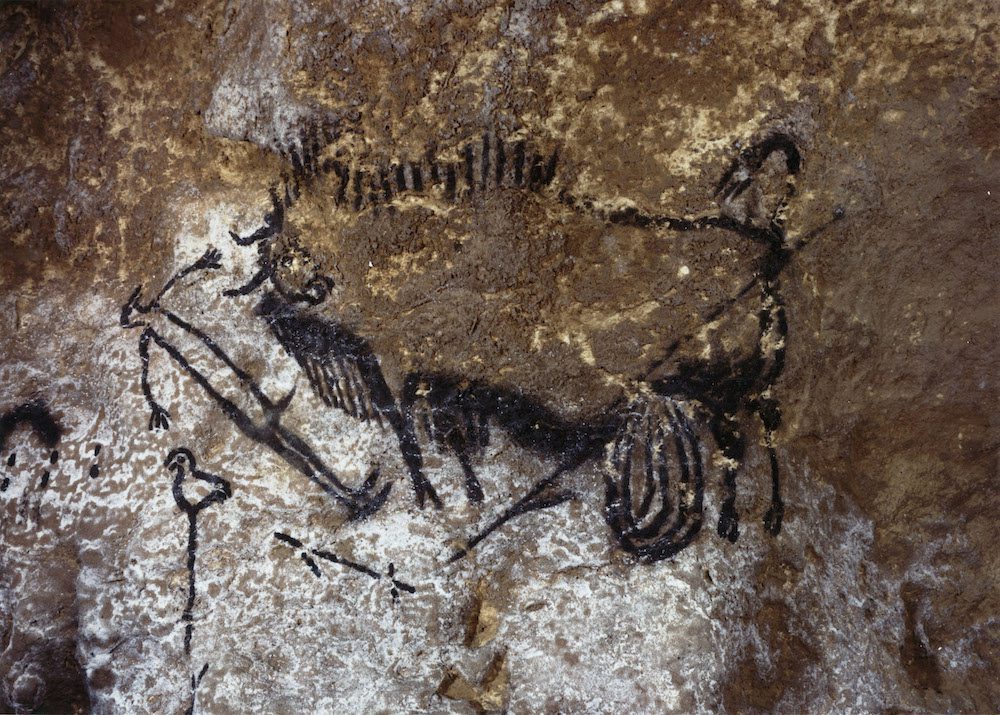
The journey through the Lascaux cave terminates in the Chamber of Felines, where the highest concentration of paintings is found, spanning an area of 250 meters.

The conservation of Lascaux has been a critical priority since its discovery. After the cave opened to the public in the early 1940s, the site suffered significant damage due to increased humidity, carbon dioxide, and the growth of mold. In response, the French government closed the cave in 1963 and began extensive conservation efforts to protect this invaluable cultural heritage.
The opening of Lascaux II—a highly detailed replica of the original cave—in 1983 allowed the public to experience the artwork while safeguarding the fragile site.
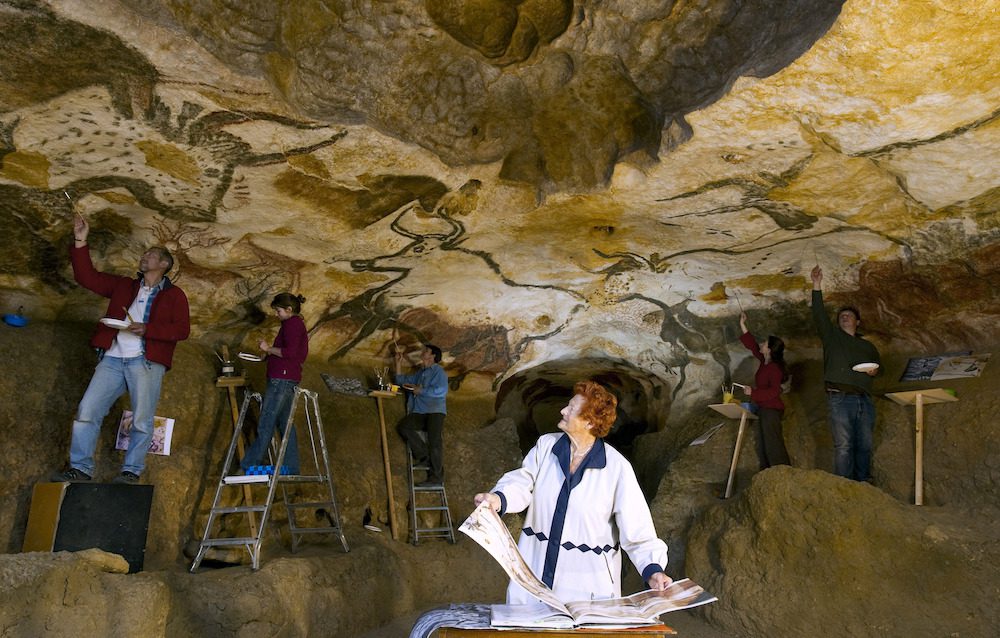
Current conservation efforts involve advanced climate control technologies, continuous monitoring of the cave’s environment, and innovative methods to combat mold and bacteria that threaten the delicate paintings. These collaborative efforts bring together experts from various fields, including microbiologists, chemists, and art restorers, highlighting the interdisciplinary approach required to preserve such a magnificent piece of cultural history.
Discover Scala Archives’ images of the restorations and official replicas of Lascaux II!
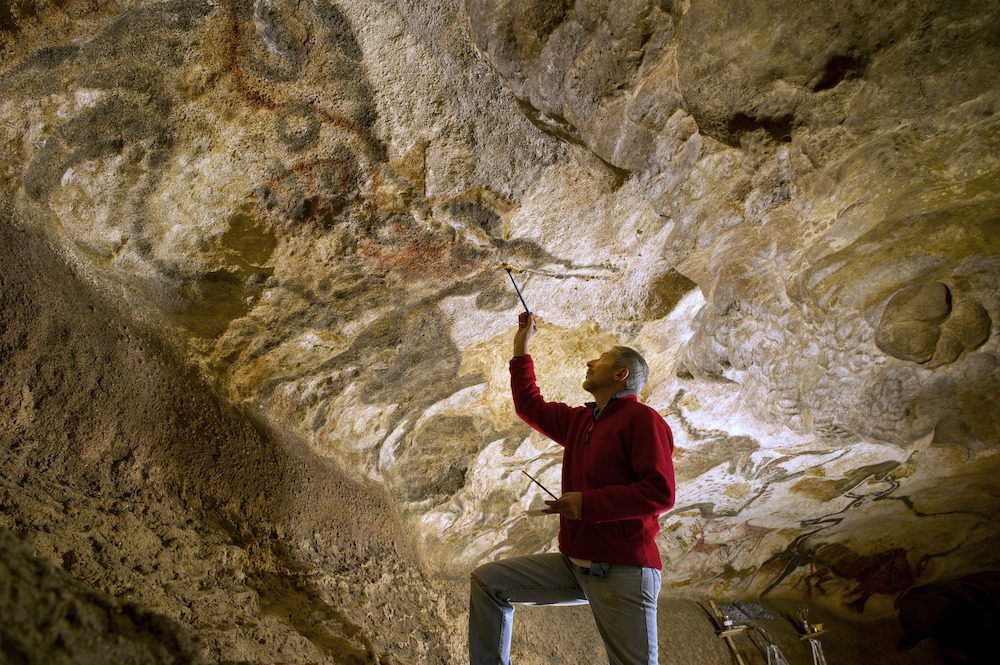
Contact us to find the right image and assess the most suitable license for your creative project on Lascaux, or explore the services of Scala Archives by visiting our website.
****